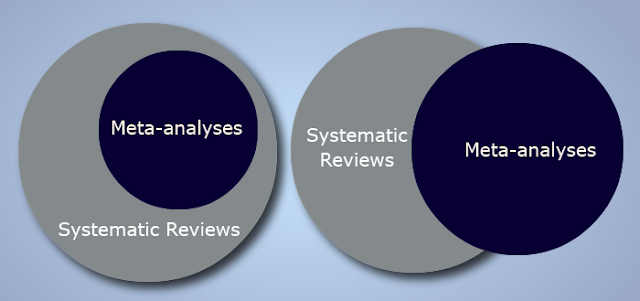Simple Data Analysis Techniques, Top 5
Reacquaint yourself with simple yet important data analysis tools to transition from abstract numbers to quantifiable success.
In today’s digital era, we are inundated with information—it’s overwhelming. Leaders at the top helm make decisive decisions daily. Sorting through avalanche of data to assist management’s decision making is the key. Objective is to sort and interpret and report findings. Toward this end, tools or techniques for statistical data analyses achieve this objective.
Buzzwords we hear today are big data, hadoop, and AI; however, rudimentary tools need to be deployed to their maximum capability, which is not the case in most firms. Propel your data analysis program by mastering the following 5 basic techniques.
Review these mundane statistical techniques, yet so vital.
| Techniques | Merits | Demerits |
| 1. Hypothesis Testing | Hypothesis tests are used in multiple disciplines such as science, research, economics, etc. Popularly known as t-testing, hypothesis testing ascertains if a specific principle is in reality true for the data set or population; consider the result of a hypothesis test statistically important if the outcomes couldn’t have happened by random probability.
Demerit:
| Steer clear of common errors to ensure rigor in this test; for instance, the placebo influence occurs when research participants incorrectly expect a certain outcome and then perceive or attain that result in actuality. Observer effect or Hawthorne effect is yet another error you will notice when participants distort results because they are conscious of the fact that they are being studied. |
| 2. Mean | The arithmetic mean, popularly called as “the average,” is the total of a list of numbers divided by the number of items on the list. The mean assists in ascertaining the overall trend of a data set or provides a quick overview of your data. Yet another plus point is its simplicity and swiftness in use. | The mean taken by itself with the exclusion of other techniques is risky; in few data sets, mean is also closely associated to the mode & median, which are the other two gauges associated to mean. Notwithstanding a high number of outliers or a distorted distribution, the average doesn’t necessarily offer accuracy and details for your decision making. |
| 3. SD | Standard deviation is a measure of the spread of data around the mean; a high SD indicates that data is spread more broadly from the mean; on the contrary, a low SD implies that more data line up near the mean. A useful tool in a statistician’s toolbox, SD quickly ascertains the scattering of data points. | Similar to the mean, SD is misleading if it is the only measurement being considered; hence, consider other techniques too. For instance, if data have a unique pattern such as a non-normal curve or a huge amount of outliers, then the SD will not provide the insight you need. |
| 4. Regression | This technique determines trends over a time-frame. In statistics, regression shows the associations between dependent and explanatory variables. These variables are normally depicted on a scatter-plot and the trend line describes weak or strong associations. Commonly used technique; universities and high schools teach a chapter on regression by default. | Regression is not detailed. On some occasions, the outliers on a scatter-plot matter a lot; for instance, an outlying data point may show the input from your most important customer or your major service offering but the very nature of a regression line tempts you to ignore the outliers. As an example, think of Anscombe’s Quartet wherein the data sets have ditto regression lines but involve data points that are drastically different. |
| 5. Sample Sizing | You need not always gather information from each member of the universe (population) for measuring large data sets such as employee count or census—sampling does the trick for you. Ascertain the apt size for a sample to ensure it is accurate. To ensure your data collection is statistically significant, leverage proportion and standard deviation methods. | Certain “assumptions” are what your proportion’s equations rely on when studying new and untested variables in a population; however, these assumptions might be totally erroneous and the error is then carried to your sample size estimation and then onto the remaining statistical data analysis. You don’t want this to happen. |
StatsWork statisticians urge firms to harness simple tools to the maximum while bearing in mind their pitfalls. Fundamental techniques for statistical data analysis lay the platform for advanced and more powerful techniques. Benefits from using simple techniques are immense; reap those untapped benefits.
Statswork is a pioneer statistical consulting company providing full statistical assistance including academic, educational institutions and non-government organizations across the globe. We provide end-to-end solutions for all your analytical needs that include creating hypothetical framework to power point presentation. The objective is to provide prompt, reliable, and understandable information about data analysis to our clients. Our team consists of doctorates with a minimum of 2 years’ experience mandatory in the research field. Further, team at Statswork have experience in handling range of statistical tools such as exploratory data analysis, probability distribution, estimation and hypothesis testing, linear regression and correlation, multiple regression, time series, quality and productivity, experimental design, analysis of variance, non-parametric, Bayesian decision making, factor analysis, MANOVA, discriminate analysis. Our team at Statswork possess strong critical and analytical thinking, problem solving, data analysis (Drawing conclusions), Communicating and presenting findings, and decision making skills. However, at the bottom line we possess skills that associated with decision making rather than making spreadsheets. Customer satisfaction is a key mantra and thus, our activity is totally customer oriented. Experience on-time reliability within your budget limit.





Comments
Post a Comment